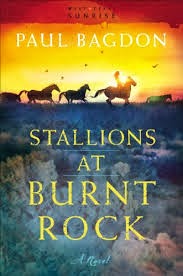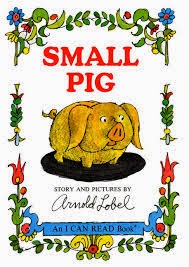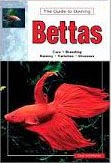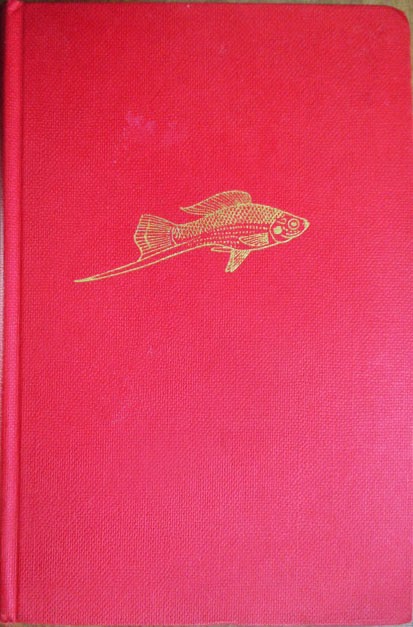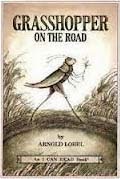This book was a slow start for me, but worth the read. It’s all about the tulip craze that occurred in the Netherlands in the early 1600’s. The book establishes a solid groundwork by introducing the flower- where it came from, why it was so unique and sought-after, all the little particulars about the Dutch economy, customs, and the flower itself that made it possible for so many people to suddenly bid crazily on the bulbs. Staggering fortunes were spent, rapidly changing hands, all for flower bulbs that couldn’t be examined because they were in the ground until a certain period of time usually months in the future! The nature of how tulips grow made them relatively scarce to begin with, the treasured vivid streaking of colors called “breaking” was unpredictable (actually caused by a virus), and so valued even more. Prices continued to rise steeply until they suddenly crashed, and the last few chapters cover the aftermath- how people recovered or didn’t, how the tulip steadily remained a gardener’s flower, even after its heightened popularity had abated. Interestingly, the author also mentions a few other tulip crazes that occurred in different countries- a hundred years later- and with other flowers as well for brief periods- hyacinths, dahlias, red spider lilies- although none of those quite as astounding as the tulip mania, they show the same phenomenon. It was a very interesting read and I learned a lot, not only about one particular flower, but also about the rudimentary workings of a stock market (that’s basically how the bidding and exchanges of bulbs were carried out- as far as I understand- because they were mostly intangible objects, some people selling didn’t even own any bulbs!) The only thing I wished for was a few illustrations showing the gorgeous colors and patterns that once had people trading an entire estate for a single flower.
Month: February 2014
by Paul Bagdon
I was surprised to find myself leaving this book behind. It started out well enough. Once again, the story of a strong woman doing a job commonly thought of as man\’s work, in a bygone era. Lee Morgan runs a horse ranch- breeding, raising and selling horses. She\’s got a dream to create a better strain of stock horses. Jointly with a ranching friend, she comes up with a plan to get attention from buyers by staging a horse race at the upcoming country fair. The fair has always been a quiet, joyful event, but word of the horse race brings gamblers and other unsavory characters into town, trouble brewing.
That\’s when I lost interest. At first I was enjoying this book even more than The Hearts of Horses. It has some beautifully written descriptions of the landscape and the animals themselves. There were some intriguing characters, including a newly-hired horse trainer that Lee takes on (against the better judgement of her colleagues). This guy is good with the horses but something of a loner with a wicked temper that has lost him several jobs… I kept expecting a stereotypical ending here, particularly because the ranch lady, Lee, is a staunch christian (incidentally, organizing a horse race goes against her conscience because of the prospective gambling). So I suspected that Lee was going to convert the horse trainer, and turn his life into roses. Or he was going to step in and rescue the fair from danger and chaos (this thought came up after I read the scene where he rides a horse into the desert and expertly shoots holes in cacti with his cherished gun). Or maybe even he falls in love with Lee and the outcome is something different altogether (she has an apparent love interest in someone else, at the beginning of the novel).
But I didn\’t read far enough to find out, and I was already just skimming pages when the story started to get more wrapped up in the trouble caused by outsiders coming into town, the sheriff trying to keep order, gunfights in the local saloon, etc. Maybe you\’ll be intrigued enough to pick up this book someday and find out what happens. Then you can come back and tell me!
Abandoned 191 pages, 2013
- Tags: 0/5- Abandoned, General Fiction, Western
by Molly Gloss
After the compelling read that was Conversations with a Prince, I was in the mood to read more about horses, so pulled all the books I could find off my TBR shelves. Unfortunately, The Hearts of Horses couldn\’t stand up to the previous read, but it was a good story regardless. Just not as in-depth as I wanted, not as much about horses as I wanted, so rather pale in comparison.
It\’s the story of a solitary woman who lives during WWI era, filling in a ranch job left vacant by men gone to war. She rides from farm to farm breaking young and untamed horses to saddle. I was intrigued by the premise and wanted to read more about the psychology, physical work and human-animal communication involved in teaching horses, particularly since the woman in this story, Martha, stood out for more than just doing what was then considered a man\’s job. She also had unconventional methods, gentling the horses via communication with body language rather than forcing them into submission. Reminded me a lot of The Man Who Listens to Horses by Monty Roberts (which I can\’t believe I haven\’t written about yet).
What I got instead was very much a story about community, and how people work together. Martha is not much of a \”people person,\” she prefers the company of the horses. But her job entails riding daily between several ranches in order to work with a string of unbroken horses, one after another (to fit the most work into a day). So gradually she becomes involved with those around her; the struggling ranch owners, lonely wives, hired hands all come to know and respect her. Some are bitter, some cruel to the animals, others want to confide in her. She helps out when she feels it is needed- several times rescuing animals that have fallen over roadsides towards rushing water, helping to find lost stock, riding at a moment\’s notice for the doctor. A certain level of human suffering rose out of the book into my consciousness; medical care was primitive and limited; one character was dying of cancer and there was literally no treatment available (aside from the option of a crude, costly and ultimately ineffective surgery). In another ironic situation, a drunkard\’s family fell suddenly ill after eating improperly home-canned food. Martha drove the woman and children to the hospital, then rode off the find the husband and inform him what had happened to his family. She did find him, but he was drunk and found sport in frightening her horse off the road. She and her horse were injured, she had no chance (or desire I imagine) to speak to him, and he arrived home, ate the same canned food and died alone, all unknowing. I could not get that scene out of my head for a long time.
That\’s just a little bit of what was in this book. There are a lot more interesting stories about the small community. Stories of women, young and old, filling in for their missing men. Of newcomers hoping to work the land and finding disappointment. Of mismanagement and greed, of sacrifice and charity. There\’s a slowly-growing romance between Martha and one of the hired hands she meets, that was satisfactory. There\’s also the effects of the war and its news on everyone, and the persecution against a certain ranching family of German descent. But overall I wanted more about the horses, so it was just a good read to me, nothing more.
Rating: 3/5 289 pages, 2007
more opinions:
Floor to Ceiling Books
Blogging for a Good Book
Shut Up, Heathcliff
A Year of Riding at East Hill Farm
by Helen Husher
Wonderful book. Found it at a book sale, not sure when/where. It\’s about horses, the intimate and subtle communication that can happen between the animal and its rider. In ways I never will understand or experience, but am fascinated to read about. You know when you watch dressage (I have on very few occasions) and it looks like the rider is doing nothing but the horse moves purposefully and gracefully through a series of complicated steps, as if it were reading someone\’s thoughts? Husher explains how they get there, by describing her own journey learning to ride horses again as an adult, not just sitting on them and directing them down a trail or in circles around a practice ring, but really riding. All the struggles and frustrations, the pitfalls and setbacks, the bad days and panicked or crazed horses. The ones that have bad habits she finds ways to work around or modify, the ones that are finely trained and make her feel dull and inept. Her mistakes and those of the animals as well, and how slowly she learned to communicate with them and turn riding into an act that they did together, not order and comply, push and pull, but unity.
I am probably not describing this very well, but then I don\’t know if I understood it well, having never ridden a horse like that myself. But I was enthralled by her descriptions, not only of the horse behavior and what it felt like to be working with them, but also how she figured out what they might be thinking, what got the message across, what gave her insights into why they act or do certain things. Horses can be complicated creatures, and remarkably straightforward at the same time. Husher\’s language is honest and intricate, and I love the way she thinks and outlines things. She tells stories of her own experiences with a handful of different horses, and also refers to some works of literature about horses, what they tell us about our connection as well. Even while pointing out the books\’ flaws and inaccuracies, she lauded their precision in communicating certain aspects of the horse/human relationship, which is probably why those stories have lasted so long. In particular two that I myself have and love- Black Beauty and National Velvet. The way Husher talks about those books makes me want to read them again, right now.
And read whatever else this author has written, that I can find. Whether it\’s about horses or something else entirely.
Rating: 4/5 182 pages, 2005
by Arne Schiotz
illustrations by Preben Dahlstrom
Another antique illustrated guide to fishes. Like most of the other books, this has some practical basics on care and maintenance, as well as numerous colored plates illustrating many popular species. But this book has a lot of other features that I found appealing. It is very scientific yet simple and straightforward enough in describing things like how the gills function or the life cycle of disease organisms. What really makes it stand out are the dated yet stylish diagrams and drawings that illustrate these points. There are also illustrations on the growth of fish scales, the use of body patterns and countershading to distrupt the eye, how the lateral line picks up signals from the environment, the relationship of different groups of fishes in an evolutionary family tree and so on. Nice little illustrations also show the various micro-organisms that serve as live foods, pests such as snails, hydra, planarians and fish lice that can infest the tank and an assortment of aquarium plants. These are described in family groups in their own chapter, and also more detailed pictures and descriptions are provided along with the species pages as follows.
The main feature of the book is the numerous pages on individual species of fishes with very nice illustrations accompanying them for identification. There is a brief description for each outlining its origins, natural habitat, feeding and temperature requirements, known ease or difficulty in breeding, and sometimes notes on particular needs or behaviors. About every other page also included aquatic plants in the illustrations, with little notes on them as well. It made a lovely natural backdrop for the fishes depicted, most attractive. Overall I enjoyed viewing the artwork of many colorful and interesting kinds of fish, and also had fun holding this book open alongside Aquarium Fishes in Color to compare how the two artists depicted the same species. Whereas many of the aquarium books I\’ve read are translated from German authors, this one happens to have a Danish author.
Rating: 4/5 223 pages, 1969
by Meg Descamp
An enjoyable book on one of my favorite subjects- gardening. It\’s a little memoir of sorts, a humorous look at the author\’s first forays into gardening when she and her husband bought a new house with a neglected yard. Coming from a family of green thumbs but never before having had any interest in growing plants, Descamp often grumbled when her sisters gave her pointers on how to do things. But her resistance to advice soon turned to questioning and before long a sort of friendly competiveness between the sisters. Gradually she gets more involved in doing things for the yard, and starts to learn about the ins and outs of gardening. Befuddlement at all the complexities of soil ammendment and pest control. Frustration at roses that require too much work. Disgust at slugs and other nuisance critters. Doings of her cats, delving into bulbs, discovery of gardening catalogs, forays into composting, arguments with her husband about where fruit trees and rose bushes should go. The loss of trees and introduction of many new things. It was a pleasure to remember a lot of my own first experiences in gardening along with the author. Even more so because it is set in Portland; any book placed in the great Pacific Northwest makes me feel at home. There\’s also stuff about her neighborhood, endless trips to the local nursery, friendly and not-so-friendly people next door and around the corner… But mostly it\’s about gardening. Fun, light read. Made me laugh.
Rating: 3/5 206 pages, 2003
by Arnold Lobel
Small Pig lives on a farm. The farmer\’s wife is doing a thorough cleaning of everything. Last of all she comes to the pigpen, and cleans up all the mud. She\’s satisfied and goes on her way, Small Pig is upset. He loves mud. He misses it very much. He\’s angry at the farmer\’s wife. So he runs away, looking for a new, comfortable muddy place. He finds mud in different places, but there\’s always someone or something to keep him from staying there. Finally he reaches the city and finds what he thinks is some nice, soft, oozy mud in the middle of a sidewalk. But it\’s not mud at all, and soon Small Pig is stuck! A crowd gathers, including the farmer and his wife who are out looking for their missing pig. They are shocked to find him there, get some help to release him from the sidewalk, and return to the farm. The farmer\’s wife apologizes and promises never to clean the pigpen again, and Small Pig is happy to be home. It\’s a cute, fun story. Arnold Lobel cracks me up.
Rating: 4/5 64 pages, 1988
by Gene Wolfsheimer
This book wasn\’t what I expected, and a little disappointing. I was eager to learn more about betta fish, but the author is obviously passionate about breeding fish and discusses little else, in spite of the subtitle highlighting care, diseases, variety, raising fish and breeding. The book is actually most about those last two subjects.
I did enjoy reading the first section and learning about the history of betta fish. There is some interesting, albeit brief, information about their physiology (mostly the air-breathing labyrinth organ) and aggression (they show inclinations to fight each other very young, at nine weeks!). Some guidelines on feeding, proper temperature and water quality- although here I balked because the author plainly states he keeps his fish (especially in his breeding facility) in individual quart jars. Too small! The most detailed part about the book outlines how to breed the fish and raise the young, with a few interesting little anecdotes. The paragraphs on betta competitions do not outline how a show is conducted or how to prepare and participate in one, but merely detail what standards the fish are judged by, with the author offering his own opinion on such. Next he mentions the rare occurence of a truly albino betta, and frequently mentions the strains of a particular betta breeder he seems to admire. And with the mention of albinos, the book ends very abruptly. I turned the page expecting more, and there was just an index. What?
I do admit the photos are spectacular, showing many colors and tail shape varieties of betta I had never seen before, although the author seemed to favor the mottled and pale-colored ones that are not really popular. I would have liked to see more variety, although I wonder if the kinds of fish I see in the stores nowadays were simply not common when this book was written. It leaves a lot to be desired and has some plainly incorrect advice as well.
Rating: 2/5 61 pages, 2003
by G. Mandahl-Barth
This book was enjoyed for its aesthetics, not particularly valued for the information contained therein. It is very dated, and the care/technical data is rudimentary at best, although I can see that some basics have never changed. In some ways it was amusing or enlightening to read how different methods and equipment were of the past. Aquarium heaters had no thermostat, it was either on or off, you had to flip the switch and try and regulate it yourself. Siphons were made of rubber hosing and a glass tube, commercial fish food was not that great so it was recommended to catch, raise or prepare your own foods, and there is no mention of dechlorinating water at all (the book says to collect rainwater or use water from a well). There is some mention of beneficial bacteria in a tank, but none of establishing a cycle. And it seems that most standard size tanks were relatively small- repeatedly throughout the book any fish over four or six inches is deemed too large for most people to consider keeping!
But what I loved were the pictures. The first half of the book is full of color plates hand-painted by one N. Norvil, illustrating many popular species. At least, popular of the time! It was interesting to see which ones I could recognize and which have subtly changed shape or color over nearly five decades. Many which are deemed unpopular because of their particular habits, unattractive colors or difficulty in keeping are actually more familiar to me. Others I had never seen mention of at all, so those have obviously fallen out of favor by now. I was surprised to find that this book states emphatically that goldfish should never be kept in a round bowl, in fact it advises against keeping them indoors at all and says their only proper habitat is an outdoor pond. Nearly fifty years, what we still haven\’t learned.
In spite of the fact that the color plates occupy the first half of the book, and information on each species the end, it was easy to flip back and forth between them. Species info was very basic, often noted that this fish or that one had never been known to breed in captivity, whereas I know that\’s not the case for many of them today. Helpfully, all the plates and the species notes have corresponding numbers, so if you look a fish up in the index you simply have to find its numbered illustration or listing.
I featured a few images of the artwork out of this book at the end of this post.
Rating: 3/5 138 pages, 1966
by Arnold Lobel
Finding books for my two-year-old at the library, I\’ve come to realize that we must read more Arnold Lobel. He\’s hilarious. My favorite is Small Pig, we\’ve read it so many times I thought I owned that one but can\’t find it on my shelf so must look again. Just checked this one out a few days ago. Almost left it at the library because when I started to read it my little one immediately disliked and pushed it away, but I found I just had to skip the first segment (about the morning club) and then she was enthralled.
The stories are always simple enough, but have some underlying messages that make it entertaining and thoughtful as well. Here Grasshopper is simply going on a journey, walking on a road to see where it takes him. Along the way he meets different bugs, each who have their own idea of what\’s important and try to get him involved in their activities. There\’s a group of bugs who have a club all about loving the morning (they get upset when they discover Grasshopper likes afternoons and nighttime just as well), a bug obsessed with cleaning everything, a mosquito who insists on ferrying Grasshopper across a puddle that he could well just step across (very funny scene), a worm living inside an apple who freaks out when Grasshopper tries to eat it, a group of butterflies who do exactly the same thing every day, and a pair of dragonflies proud of their speed in the air who don\’t have time to stop and look at anything. With each encounter Grasshopper is polite but unmoved by their fervor, the other bugs are puzzled or upset at his indifference to their passions! He continues on his way each time.
Maybe my kid just likes this book because it\’s full of bugs who do nonsense things. I find it amusing as well.
Rating: 4/5 62 pages, 1978
DISCLAIMER:
All books reviewed on this site are owned by me, or borrowed from the public library. Exceptions are a very occasional review copy sent to me by a publisher or author, as noted. Receiving a book does not influence my opinion or evaluation of it
RATINGS / SUBJECTS:
0/5- Abandoned (168)
1/5- Blah (15)
2/5- Just Okay (293)
3/5- Good Read (1325)
4/5- Great Book (680)
5/5- Loved It (60)
Animals Fiction (466)
Animals Nonfiction (686)
Art (52)
Baby books (111)
Bios / Memoirs (278)
bookshelves (31)
Books on Books (11)
Classics (39)
Current Reads (2021)
Fantasy / Sci Fi (335)
Gardening / Food (131)
General Fiction (168)
giveaways (69)
Graphic Novels (230)
Historical Fiction (95)
Inspirational (19)
Juvenile Fic (441)
Juvenile Nonfic (62)
Medical/Health (62)
memes (53)
Nature (152)
Nonfiction (general) (151)
Parenting / Pregnancy (48)
Past Reads (337)
Picture Books (90)
Plays/Poetry (12)
puzzles (139)
Re-reads (70)
Self Help (8)
Short Stories (65)
Speculative Fiction (34)
TBR additions (91)
Travel/Adventure (69)
Western (20)
wondrous words (25)
Young Adult (117)
SUBSCRIBE VIA EMAIL:
SOME BOOK BLOGS:
- Across the Page
- Bermudaonion’s Weblog
- Blue-Hearted Bookworm
- Book Chase
- Bookfoolery
- Carol’s Notebook
- Diary of an Eccentric
- Hogglestock
- Indextrious Reader
- It’s All About Books
- Kyusi Reader
- Melody’s Reading Corner
- Musings of a Bookish Kitty
- Puss Reboots
- Read Warbler
- Reading the End
- Shelf Love
- Snips Snails and Puppy Dog Tales
- Sophisticated Dorkiness
- Stuff As Dreams Are Made On
- The Last Book I Read
- Work in Progress
ARCHIVES:
- 2024
- January 2024 (21)February 2024 (22)March 2024 (45)April 2024 (30)
- 2023
- January 2023 (27)February 2023 (23)March 2023 (25)April 2023 (11)May 2023 (17)June 2023 (11)July 2023 (23)August 2023 (23)September 2023 (14)October 2023 (14)November 2023 (26)December 2023 (14)
- 2022
- January 2022 (12)February 2022 (7)March 2022 (13)April 2022 (16)May 2022 (13)June 2022 (21)July 2022 (15)August 2022 (27)September 2022 (10)October 2022 (17)November 2022 (16)December 2022 (23)
- 2021
- January 2021 (14)February 2021 (13)March 2021 (14)April 2021 (7)May 2021 (10)June 2021 (5)July 2021 (10)August 2021 (27)September 2021 (16)October 2021 (11)November 2021 (14)December 2021 (12)
- 2020
- January 2020 (14)February 2020 (6)March 2020 (10)April 2020 (1)May 2020 (10)June 2020 (15)July 2020 (13)August 2020 (26)September 2020 (10)October 2020 (9)November 2020 (16)December 2020 (22)
- 2019
- January 2019 (12)February 2019 (9)March 2019 (5)April 2019 (10)May 2019 (9)June 2019 (6)July 2019 (18)August 2019 (13)September 2019 (13)October 2019 (7)November 2019 (5)December 2019 (18)
- 2018
- January 2018 (17)February 2018 (18)March 2018 (9)April 2018 (9)May 2018 (6)June 2018 (21)July 2018 (12)August 2018 (7)September 2018 (13)October 2018 (15)November 2018 (10)December 2018 (13)
- 2017
- January 2017 (19)February 2017 (12)March 2017 (7)April 2017 (4)May 2017 (5)June 2017 (8)July 2017 (13)August 2017 (17)September 2017 (12)October 2017 (15)November 2017 (14)December 2017 (11)
- 2016
- January 2016 (5)February 2016 (14)March 2016 (5)April 2016 (6)May 2016 (14)June 2016 (12)July 2016 (11)August 2016 (11)September 2016 (11)October 2016 (9)November 2016 (1)December 2016 (3)
- 2015
- January 2015 (9)February 2015 (9)March 2015 (11)April 2015 (10)May 2015 (10)June 2015 (2)July 2015 (12)August 2015 (13)September 2015 (16)October 2015 (13)November 2015 (10)December 2015 (14)
- 2014
- January 2014 (14)February 2014 (11)March 2014 (5)April 2014 (15)May 2014 (12)June 2014 (17)July 2014 (22)August 2014 (19)September 2014 (10)October 2014 (19)November 2014 (14)December 2014 (14)
- 2013
- January 2013 (25)February 2013 (28)March 2013 (18)April 2013 (21)May 2013 (12)June 2013 (7)July 2013 (13)August 2013 (25)September 2013 (24)October 2013 (17)November 2013 (18)December 2013 (20)
- 2012
- January 2012 (21)February 2012 (19)March 2012 (9)April 2012 (23)May 2012 (31)June 2012 (21)July 2012 (19)August 2012 (16)September 2012 (4)October 2012 (2)November 2012 (7)December 2012 (19)
- 2011
- January 2011 (26)February 2011 (22)March 2011 (18)April 2011 (11)May 2011 (6)June 2011 (7)July 2011 (10)August 2011 (9)September 2011 (14)October 2011 (13)November 2011 (15)December 2011 (22)
- 2010
- January 2010 (27)February 2010 (19)March 2010 (20)April 2010 (24)May 2010 (22)June 2010 (24)July 2010 (31)August 2010 (17)September 2010 (18)October 2010 (11)November 2010 (13)December 2010 (19)
- 2009
- January 2009 (23)February 2009 (26)March 2009 (32)April 2009 (22)May 2009 (18)June 2009 (26)July 2009 (34)August 2009 (31)September 2009 (30)October 2009 (23)November 2009 (26)December 2009 (18)
- 2008
- January 2008 (35)February 2008 (26)March 2008 (33)April 2008 (15)May 2008 (29)June 2008 (29)July 2008 (29)August 2008 (34)September 2008 (29)October 2008 (27)November 2008 (27)December 2008 (24)
- 2007
- August 2007 (12)September 2007 (28)October 2007 (27)November 2007 (28)December 2007 (14)
- 2006
- 2005
- 2004
- 2003
- 2002
- 2001
- 2000
- 1999
- 1998
- 1997
- 1996
- 1995
- 1994
- 1993
- 1992
- 1991
- 1990
- 1989
- 1988
- 1987
- 1986
- 1985
- 1984
- 1983
- 1982
- 1981
- 1980
- 1979
- 1978
- 1977
- 1976
- 1975
- 1974
- 1973
- 1972
- 1971
- 1970
- 1969
- 1968
- 1967
- 1966
- 1965
- 1964
- 1963
- 1962
- 1961
- 1960
- 1959
- 1958
- 1957
- 1956
- 1955
- 1954
- 1953
- 1952
- 1951
- 1950

